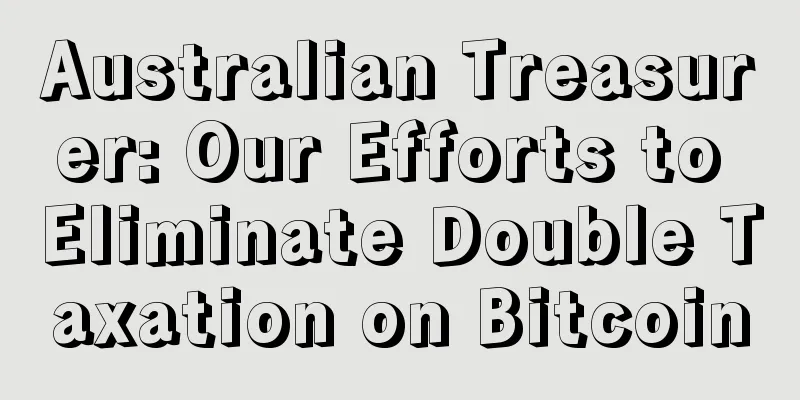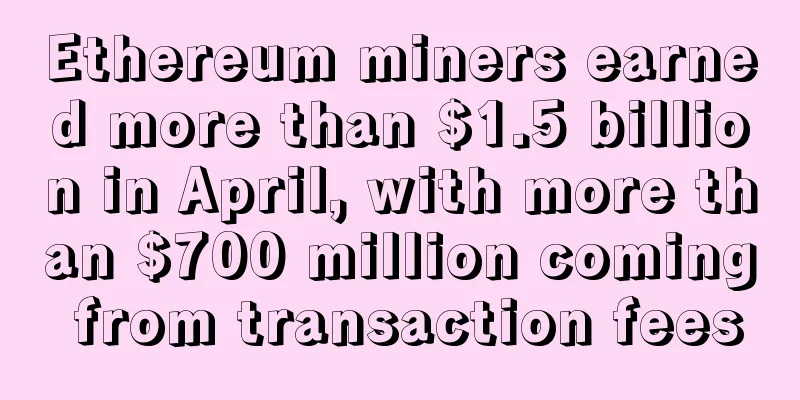European Economic Research Institute: Russia is trapped in sanctions, and the crypto community is also facing choices

|
Since Russia launched military action against Ukraine, several countries and regions, led by the United States, have gradually intervened in the conflict and have successively announced severe sanctions against Russia in the financial and trade fields: Some Russian banks have been excluded from SWIFT, PayPal has blocked major Russian banks and some users, Mastercard and Visa have announced the suspension of their Russian operations, and Audi, BMW and other physical companies have also announced the suspension of their supply to Russia or local production operations. The overseas assets of some Russian tycoons have been directly frozen or confiscated. According to the Italian Ministry of Economy and Finance, 140 million euros worth of Russian tycoon assets have been confiscated. Before the Russian-Ukrainian negotiations achieve a breakthrough or the incident comes to an end, the scope and intensity of sanctions are likely to be further strengthened. In this context, the discussion about "Russia breaking through sanctions through crypto assets" is intensifying. Bitcoin is trading at a high premium against the ruble. Funds flowing into crypto assets? On February 26, the leaders of the United States and Europe issued a joint statement, deciding to remove some Russian banks from SWIFT (the financial messaging system) in the near future. This move is also known as a "financial nuclear bomb" to impose sanctions on Russia. Founded in 1979, SWIFT is the world's leading provider of secure financial messaging services. Although it is neutral, it must comply with EU regulations. As early as 2012, SWIFT was banned from providing services to Iran, which was under sanctions. In the four years since it was removed from the SWIFT list, Iran’s economy and currency exchange rate have been greatly affected: Iran’s crude oil exports decreased by 17.2% in that year and 42.2% in the following year, respectively. As a resource-based country, the export of energy such as oil was blocked, which led to a sharp decline in its economy (after the sanctions were lifted, crude oil exports increased by nearly 80%, and GDP rebounded by 13.4%). On the other hand, the exchange rate of Iran’s legal currency against the US dollar fell sharply, and the inflation level soared. It can be seen that the name of “financial nuclear bomb” is not aimless. Although Russia has taken various defensive measures since 2014, including increasing gold reserves, reducing the proportion of dollar settlement, and developing a local financial information transmission system, being excluded from SWIFT will still have a significant impact on Russia's energy exports, currency exchange rates, inflation levels and financial market stability. The former Russian Finance Minister said in 2014 that one year after being removed from the SWIFT system, Russia's economy may shrink by 5%. Under the "encirclement and suppression" of multiple sanctions, Russia's choice to break out has become the key. The view that "Russia will choose crypto assets to circumvent sanctions" has gradually emerged in the market. The high premium of Bitcoin of 18,000 US dollars in Russian P2P exchanges and the strong rise of Bitcoin by more than 14% on February 28 seem to be strong evidence of this view. However, according to Chainalysis data, the trading volume of crypto assets denominated in rubles has not shown a significant increase, and a report from Citibank shows that Russia's recent average daily trading volume of Bitcoin is about 210, accounting for about 1.75% of the total global spot trading volume of Bitcoin. In addition, the on-chain data does not show any signs of Russian funds pouring into crypto assets. Cryptocurrency is not a solution for Russia’s current predicament
It is undeniable that crypto assets are gradually gaining more and more mainstream recognition, and have made great progress in many aspects such as underlying infrastructure, upper-layer applications, and market value. However, so far, crypto assets cannot become a way for Russia to get out of the sanctions dilemma. The main reasons are as follows: First, although the total market value of crypto assets once approached the 3 trillion U.S. dollar (2.97 trillion) mark driven by many favorable factors last year, as the market gradually weakened, the current market value of Bitcoin has shrunk to around 740 billion U.S. dollars. In sharp contrast, Russia's total economic output ranks among the top 15 in the world: Russia's GDP in 2021 is 130 trillion rubles, equivalent to 1.77 trillion US dollars, and its crude oil exports are 110.119 billion US dollars. Obviously, the volume of Bitcoin and encrypted assets cannot currently support financial needs such as transactions, settlements, and capital outflows from Russia. During the Crimean crisis in 2014, Russia's net capital outflow was $151 billion, and the net capital outflow will increase this time. However, the crypto market is obviously unable to absorb the large amount of capital overflowing from Russia for the time being. Looking at the world as a whole, crypto assets account for about 3% of the world's total assets. In the game among various economic entities, they are still unable to become the protagonist. Secondly, it is becoming increasingly difficult for various crypto assets to bypass local supervision and come to Russia’s aid. Because crypto assets have gradually become popular and have attracted mainstream attention, the understanding of crypto assets by government departments and financial institutions in various countries is also deepening, and the means of tracking the movement of crypto assets on various chains are becoming more professional and complete. As regulation continues to improve and the KYC systems of mainstream platforms become increasingly mature, the larger the amount of crypto-asset transactions, the more difficult it is to evade the review and tracking of sanctions initiators. Staff at blockchain analysis company Chainalysis also said that the United States and other sanctioning governments around the world can use on-chain analysis tools to prepare for Russia's use of crypto assets to circumvent sanctions. The combination of blockchain transparency and on-chain data analysis tools can ensure that sanctions remain a reliable deterrent. At the same time, although Bitcoin has the title of "digital gold", its current essence is still a risky asset. After the large-scale entry of mainstream funds in 2021, the correlation between crypto assets and US stocks is increasing, and the impact of international situation and monetary policy is also gradually increasing. From the deterioration of the situation between Russia and Ukraine, it can be seen that Bitcoin and gold have gone in opposite directions: in the eyes of mainstream assets, Bitcoin is more of a financial product to enhance the diversity of investment portfolios rather than a safe haven option. Russia is in trouble. Crypto assets face choices
Although there is no data to prove that Russia will use crypto assets as a solution, financial authorities in various countries have continued to express their views on this: The president of the European Central Bank said that regulators must prevent Russia from circumventing sanctions with the help of crypto assets; U.S. Treasury Secretary Yellen warned that crypto assets need to pay attention to channels for evading sanctions; Japan’s Financial Services Agency (FSA) has also said it is preventing blacklisted Russian entities from evading sanctions by using crypto assets. At present, although crypto assets have decentralized properties and are in a neutral position, crypto asset trading platforms and various service providers are subject to the supervision of economic entities and have the obligation to cooperate with financial authorities in reviewing and imposing sanctions. For example: USDC issuer Circle announced that it would temporarily ban all legal payments to Russian accounts; hardware wallet Trezor stated that it had immediately stopped shipping to Russia after the implementation of sanctions; Coinbase also stated that it would block IP registration, access or use of related services in sanctioned areas; and NFT trading platform DMarket directly announced that it would freeze NFT assets from Russian and Belarusian users; although exchanges such as Kraken rejected the request of the Ukrainian Deputy Prime Minister to block Russian cryptocurrency accounts, they still stated that "the US State Department's order" was not within their commitments. At present, Russia is in the midst of sanctions, and the crypto industry is also facing a dilemma: On the one hand, native companies in the crypto industry cannot stay out of it and ignore the scrutiny of financial authorities and the need to cooperate with sanctions. Once the freezing of user assets by the DMarket platform occurs on a large scale, it will inevitably have a huge impact on the sayings such as "decentralization" and "crypto assets are superior to traditional assets in terms of ownership"; on the other hand, some investors are affected by the weak downward trend of the market and are looking forward to the influx of Russian funds into crypto assets to boost the market. It should be noted that once Russian funds show a tendency to evade sanctions through crypto assets, the honeymoon period between Bitcoin and mainstream institutions and financial supervision will end, and the situation will become more complicated. However, with the continued rise in natural gas and crude oil prices, the United States and Europe, which are already experiencing skyrocketing inflation rates, are also under tremendous pressure. Insisting on the implementation of sanctions will only result in a lose-lose situation. Therefore, it is possible that the confrontation will be eased after a breakthrough in the Russia-Ukraine negotiations. At present, whether it is the proportion of market value to global total assets or the proportion of holders to the global total population, crypto assets cannot become a key factor in the game between the strong. However, the excellent characteristics of crypto assets determine that they are still full of imagination in the future. The overall expected value of blockchain technology and encrypted digital applications is still higher than other new things. |
<<: US President Biden to sign executive order on digital assets to ensure US leadership
>>: Wall Street insiders say: Not entering the crypto space is actually a career risk
Recommend
What is the false palmistry diagram? What does it mean?
In the palmistry illustrations, there is a type of...
The CEO of Digital Currency Group is accused of being the driving force behind ETC
Huffington Post reporter David Seaman recently to...
A detailed explanation of the fate of a woman with broken palms.
Everyone has to have something different from oth...
How to tell a woman's luck in love from her face
The quality of one’s love luck is naturally close...
What are the facial features of a scheming woman?
In daily communication, the last thing we want is...
What does a mole on a woman's nose tip mean?
Women with moles on the tip of their noses tend t...
Bitpush: A thorough understanding of the operating logic behind the Bitcoin network
Abstract: Many people know the entry channel of b...
Is a triangular face good or bad? A detailed explanation of a triangular face
Physiognomy is a folk knowledge that predicts fat...
What does it mean when a man has forehead wrinkles?
Forehead wrinkles refer to wrinkles on the forehe...
Mole on the hand Is it good to have a mole on the hand suddenly?
According to the field of physiognomy, if a mole ...
Are men with high foreheads very confident?
No matter who you are, self-confidence is indispe...
Mole location and destiny - what does a mole on the ring finger mean
People with moles on their ring fingers generally...
Where is the beauty mole located? Does having a beauty mole bring good fortune?
Moles on the face are common for many people, and...
Physiognomy: The feet of a wealthy person who can make a lot of money just by sitting at home
Physiognomy: The feet of a wealthy person who can...
I gave him 600 bitcoins, but he committed suicide last week.
Editor's note: The original article comes fro...









